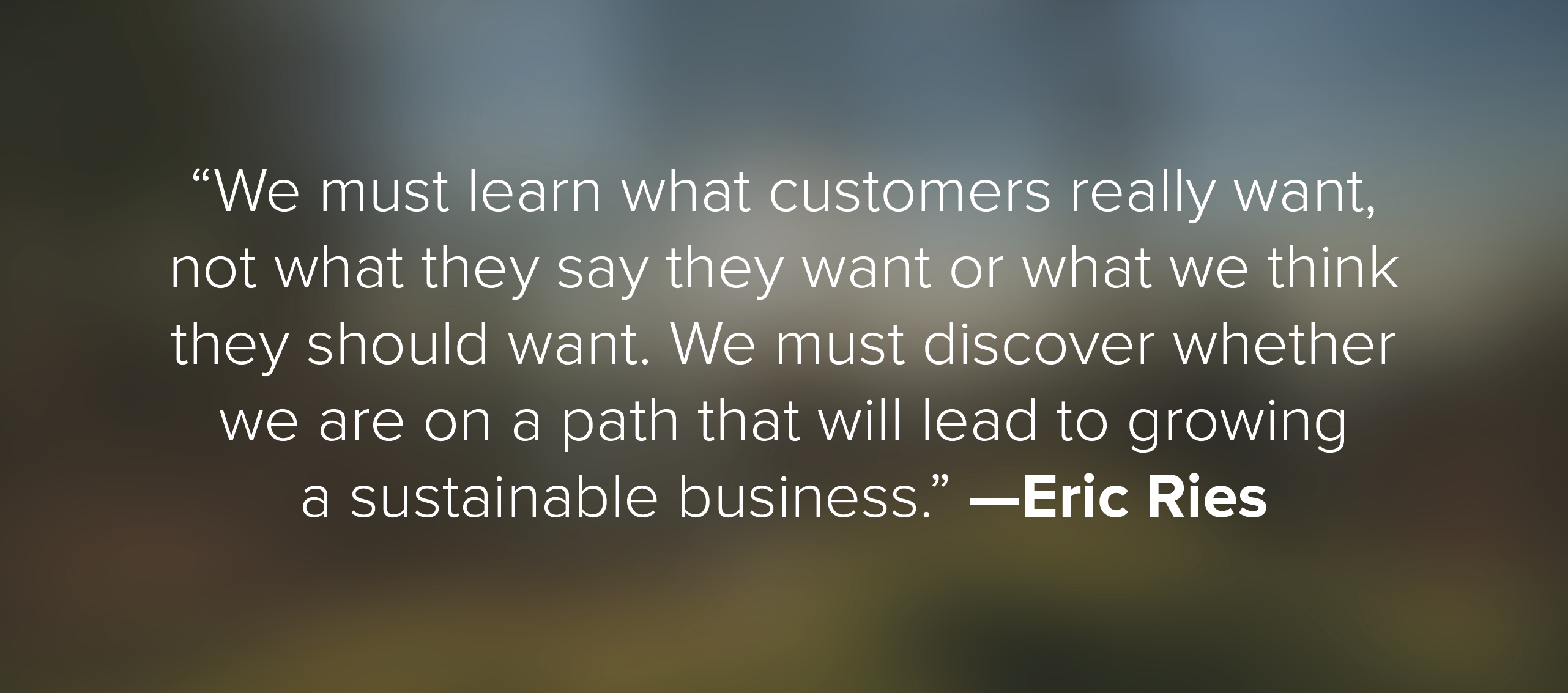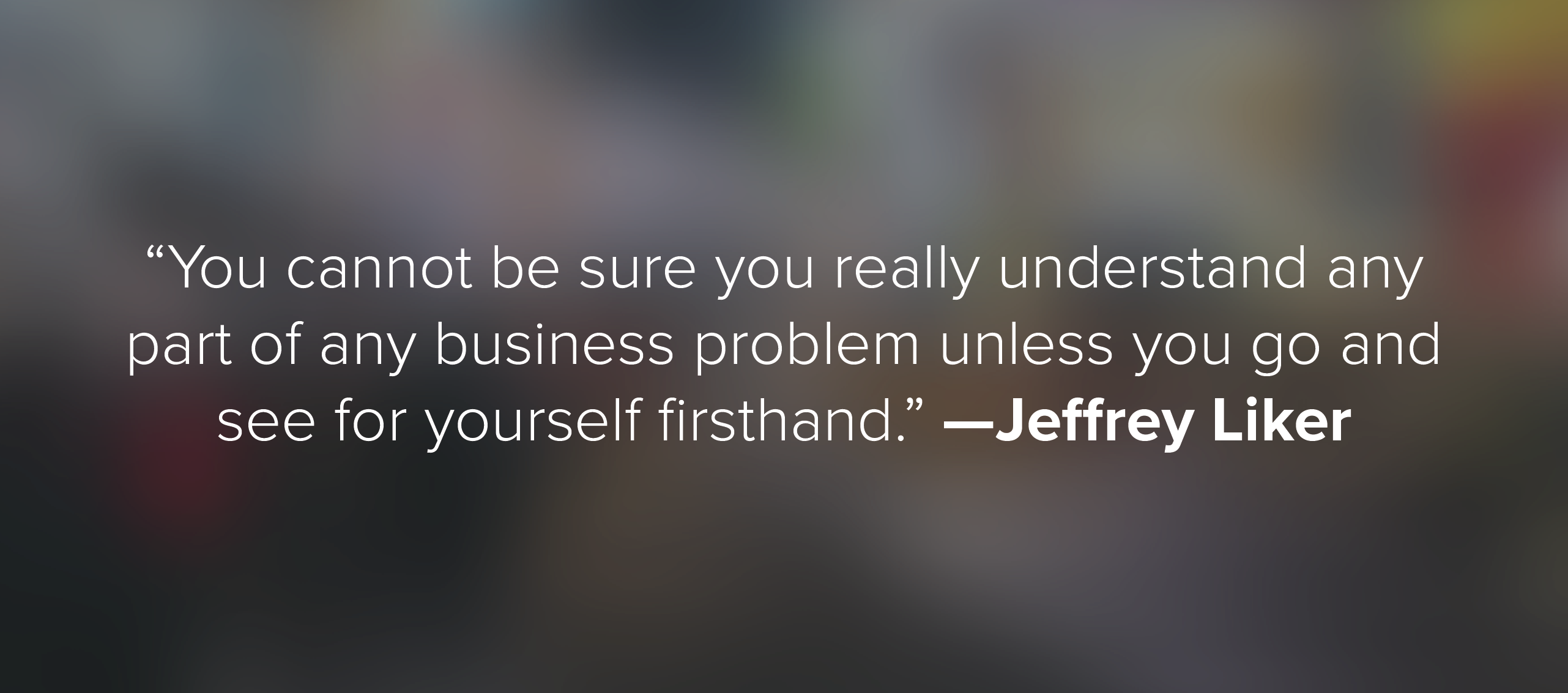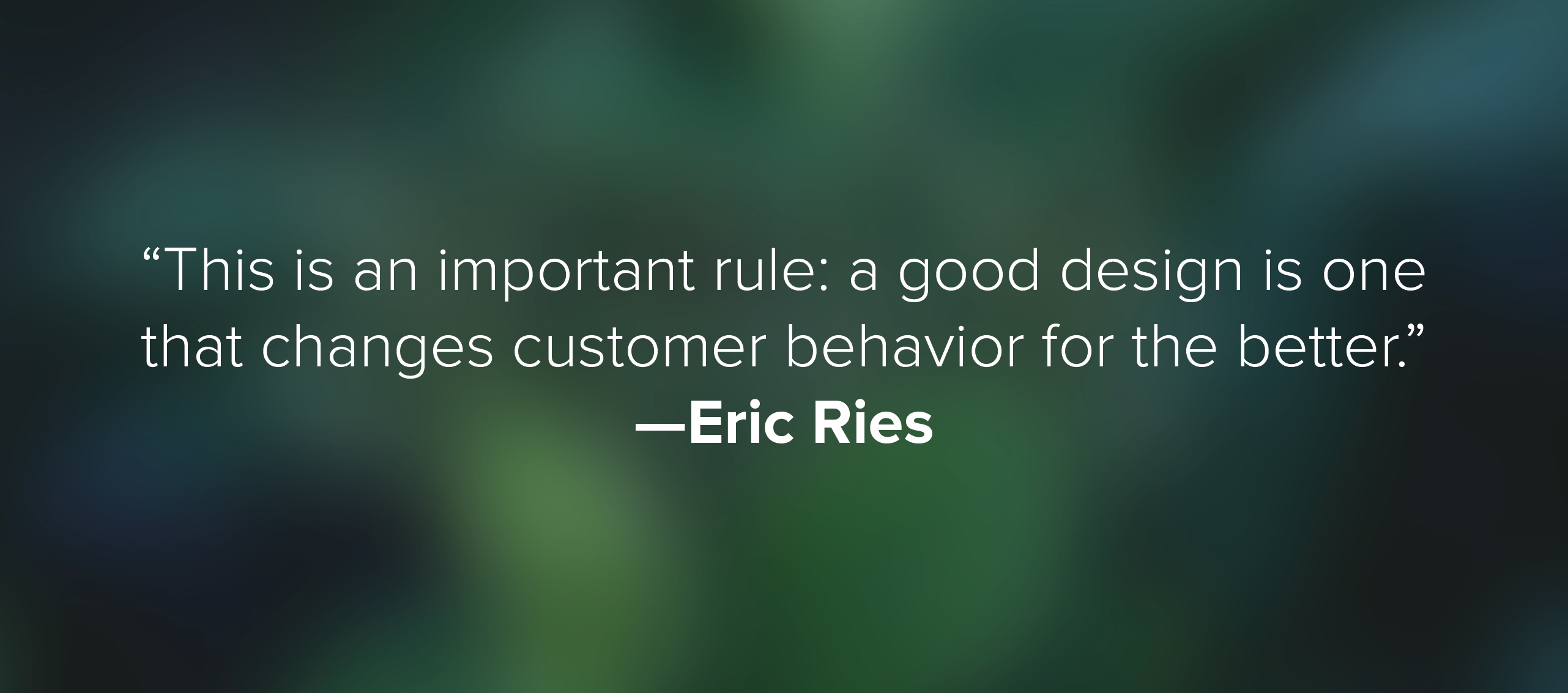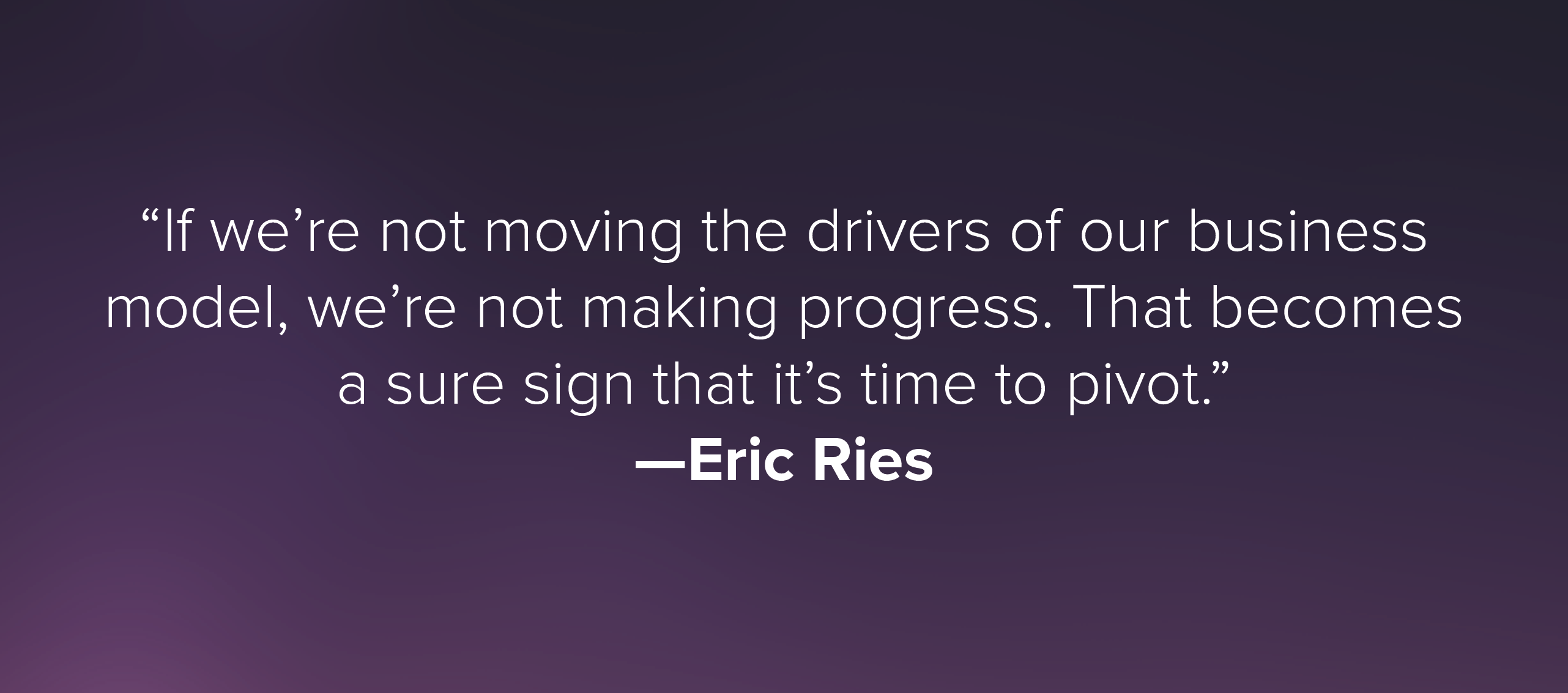How to Implement the Lean Startup Method at Large Organizations

When you hear the word, ‘startup’ what do you think of?
Is it a large, established corporation? Or is it a scrappy, young company that’s hungry to get funded and disrupt the market.
While many of us tend to imagine a startup as the latter, it turns out just about anyone can technically be a startup.
Yes, even giant corporations.
In The Lean Startup, Eric Ries defines a startup as:

His definition doesn’t include anything about company size, industry, or sector of the economy. And that’s intentional.
This is good news if you’re creating a new product or business under conditions of extreme uncertainty. The Lean Startup methodology applies to companies of all sizes—from early-stage ventures to Fortune 100 companies, and everything in-between. For example, the team that designed Convoi at Citrix operates as a startup, even though they’re a huge company.
How to tell if you’re a startup (or not)
So how exactly do you know whether you’re a startup or a standard corporation?
Well, since startups are designed to confront situations of extreme uncertainty, you know you’re not a startup if you’re able to follow an established roadmap and accurately forecast your future results.
“To open up a new business that is an exact clone of an existing business all the way down to business model, pricing, target customer, and product may be an attractive economic investment, but it is not a startup because its success depends only on execution—so much so that this success can be modeled with high accuracy.” —Eric Ries
But if you don’t have an established roadmap to execute against, and you don’t know who your customers are or what product you should build for them—you might be a startup. Even if you work at a large enterprise.
Give your customers what they want
In today’s modern world it’s no longer a question of “can this be built,” but rather, “should this be built.” Because if you find yourself building something that nobody wants, what does it matter if you do it on time and on budget?

So how do you figure out what your users really want? That’s where even large organizations can benefit from adhering to the Lean Startup framework:
Step 1: Identify your leap-of-faith assumptions
“Every business plan begins with a set of assumptions. Because the assumptions haven’t proven to be true (they are assumptions after all) and in fact are often erroneous, the goal of a startup’s early efforts should be to test them as quickly as possible.” —Eric Ries
Leap-of-faith assumptions are the riskiest elements of your initial plan, the parts of your strategy that everything else depends on. For example, you might assume that:
- There’s a significant demand in the market for a product like yours
- Once people use your product they’ll share it with their friends
- People actually have the problem your product solves
The goal of the Lean Startup methodology is to apply the scientific method to building your product. And the leap-of-faith assumptions you identify will become the hypotheses you empirically test in the following steps.
But first, before you build anything, you need to confirm that your assumptions are based in reality.
Step 2: Get out of the building
“A startup’s earliest strategic plans are likely to be hunch- or intuition-guided, and that is a good thing. To translate those instincts into data, entrepreneurs must, in Steve Blank’s famous phrase, 'get out of the building' and start learning.” —Eric Ries
One of the core principles in lean manufacturing (the framework pioneered by Toyota that Lean Startup was derived from) is the importance of basing your strategic decisions on a deep firsthand understanding of your users.
Professor Jeffrey Liker, who has spent years studying and documenting “The Toyota Way” explains the philosophy like this: “You cannot be sure you really understand any part of any business problem unless you go and see for yourself firsthand. It is unacceptable to take anything for granted or to rely on the reports of others.”

So once you’ve identified your leap-of-faith assumptions, the next step in the process is to get out of your office and spend time interacting with your potential users. You can bring them into the office, take them out to coffee, talk to them on the phone or via Skype.
There’s no formula here. Just do whatever you can to better understand your users.
For example, when Scott Cook first had the idea for Intuit back in 1982, he started by picking up the phone book, calling people at random, and asking if they’d mind answering a few questions about how they manage their finances. The whole point of these conversations was to discover whether or not people found it frustrating to pay their bills by hand.

At this stage, Cook wasn’t talking to potential users about product features or technical issues. The purpose of these early conversations was to confirm whether or not his leap-of-faith assumptions were based in reality—that users had a significant problem worth solving.
Step 3: Test your assumptions with a minimum viable product
“In the Lean Startup model, an experiment is more than just a theoretical inquiry; it is also a first product. What percentage of people in the target market actually perform the behavior you expect them to? The extrapolation won’t be perfect, but it will establish a baseline behavior that will be far more accurate than market research.” —Eric Ries
Once you’ve clarified that your potential users have a problem worth solving, the next step is to get something in front of potential users to gauge their reactions. This is called the minimum viable product (MVP), and it’s entire purpose is to empirically test your leap-of-faith assumptions using the least amount of effort and development time possible.
Keep in mind: When you’re trying to decide which assumption to test with your MVP, a good rule of thumb is to test the riskiest assumptions first. Everything else in your plan depends on them. So if they turn out to be erroneous, there’s no point in testing the others.
Your MVP can take many different forms depending on the assumptions you need to validate. It can range from a live product or functional prototype, to a landing page or demo video. Here are some examples of MVPs that three well-known companies used to validate their ideas:
- Zappos — Founder Nick Swinmurn asked local shoe stores if he could photograph their inventory. In exchange, he would post the pictures on his ecommerce site. And if anyone bought them online, he would come back to buy the shoes at full price.
- Dropbox — Drew Houston and his founding team started by filming a three-minute video of their functional prototype that demonstrated how the technology was meant to work, and asked visitors to sign up for their beta waitlist.
- Product Hunt — Founder Ryan Hoover initially launched Product Hunt as a daily email digest. Contributors would submit links to new products (using a collaborative tool called Linkydink), and each day subscribers received an email with new and interesting products.
The purpose of the MVP is to answer one question: is there already sufficient demand for what you want to build? Start with whatever requires the least possible amount of effort to answer that question. Like Reid Hoffman, founder of LinkedIn, once said:

This initial experiment puts you in a position to observe real user behavior and learn about their needs. And it also provides a clear, quantifiable outcome: either a sufficient number of users take a specific action, or they don’t. What you learn will be invaluable.
If you're worried about branding risks or launching an embarrassing MVP that could tarnish your company's reputation, Ries offers an easy solution: "launch the MVP under a different brand name."
Hurting your brand reputation is only a risk when you build up a lot of hype around your product launch and then fail to deliver on those expectations. So rather than engaging in vocal PR activities and brand building during the MVP stage, use this time to experiment under the radar and refine your product into something you're proud to release in a big public launch.
Step 4: Establish baseline metrics
“First, use a minimum viable product to establish real data on where the company is right now. Without a clear-eyed picture of your current status—no matter how far from the goal you may be—you cannot begin to track your progress.” —Eric Ries
Your MVP allows you to establish real baseline data on your KPI’s, such as signups, conversion rate, retention rate, customer lifetime value, and so on. This is the foundation for all of your future efforts. Even if it starts off as bad news, the learnings you’ll gain about your users and their reactions to your product will be invaluable.
But you need real users to interact with your product in order to have enough data to learn. How do you get those initial users when you’re starting from scratch?
When Ries’ company, IMVU, was at this stage they allocated a budget of five dollars a day to buy clicks on Google Adwords. This bought them 100 clicks every day and allowed them to measure their product’s performance with a brand new daily cohort of users each day.
Step 5: Tune the engine
“Once the baseline has been established, the startup can work toward… tuning the engine. Every product development, marketing, or other initiative that a startup undertakes should be targeted at improving one of the drivers of its growth model.” —Eric Ries
The idea here is to continue running experiments that are aimed at moving the baseline metrics that you established with your MVP toward the ideal numbers needed to prove a sustainable business model.
Start by identifying a baseline metric that you want to move the needle on. Then create a hypothesis about what you think will improve that metric, and design a set of experiments to test that hypothesis.
Going back to the example above, every time IMVU made product changes—every time they told themselves they were making their product better—they got concrete feedback from a cohort of new users telling them whether it worked or not.

Each cohort of users was like an objective report card telling them how effective their experiments were—their design changes either improved the key metric or it didn’t.
When IMVU’s efforts were aligned with what users really wanted, their experiments were much more likely to change user behavior for the better. And if their experiments weren’t making an impact, it helped helped them realize they had a problem. Which leads us to the final step in the process: deciding whether to shift course or keep going.
Step 6: Pivot or persevere
“Everything that has been discussed so far is a prelude to a seemingly simple question: are we making sufficient progress to believe that our original strategic hypothesis is correct, or do we need to make a major change?” —Eric Ries
If your product experiments are helping you make progress—moving the baseline metrics you established with the MVP toward your ideal metrics—then it makes sense to continue.
But if you’re experiencing a decrease in the effectiveness in your experiments and, as Ries describes, “a general feeling that product development should be more productive,” then something needs to change.

This change is called a ‘pivot,’ and it’s about re-evaluating your fundamental product strategy and engine of growth, and then testing a new hypothesis.
Deciding whether to pivot or keep going is the most difficult decision any startup will have to make. Because if you pivot, you restart this process from the beginning—establishing a new baseline and tuning the engine all over again. But if you don’t, you’ll continue failing to make progress.
I want to be clear about something. Pivoting doesn’t mean giving up and starting from scratch. Ries explains it actually requires that we
“keep one foot rooted in what we’ve learned so far, while making a fundamental change in strategy in order to seek even greater validated learning.”
A pivot is a structured way to shift your course and test a new hypothesis based on what you’ve learned so far. And a telltale sign of a successful pivot is that your experiments are more productive after than they were before.
If you want an in-depth analysis on how to successfully execute a pivot, or if you’d like to see a catalog of all the different types of pivots, then I recommend you read chapter eight of The Lean Startup.
The final word
No matter how big or small your company is, if you’re bringing a new, innovative product to the market you risk falling victim to “the lethal problem of achieving failure: successfully executing a plan that leads nowhere.”
Don’t let the term, ‘startup’ fool you. Any organization that’s positioned to offer something totally new to the market can apply the Lean Startup methodology to their product development process.
If you’d like to learn more about how to implement the Lean Startup methodology in your organization, check out our Lean UX Q&A with Eric Ries, author of Lean Startup and co-founder of IMVU, and Laura Klein, author of UX for Lean Startups & founder of Users Know.
Insights that drive innovation
Get our best human insight resources delivered right to your inbox every month. As a bonus, we'll send you our latest industry report: When business is human, insights drive innovation.






